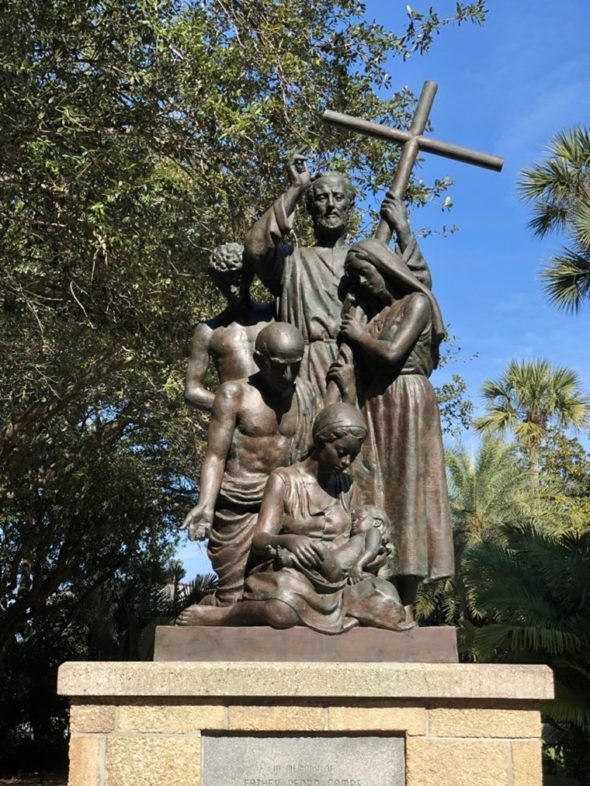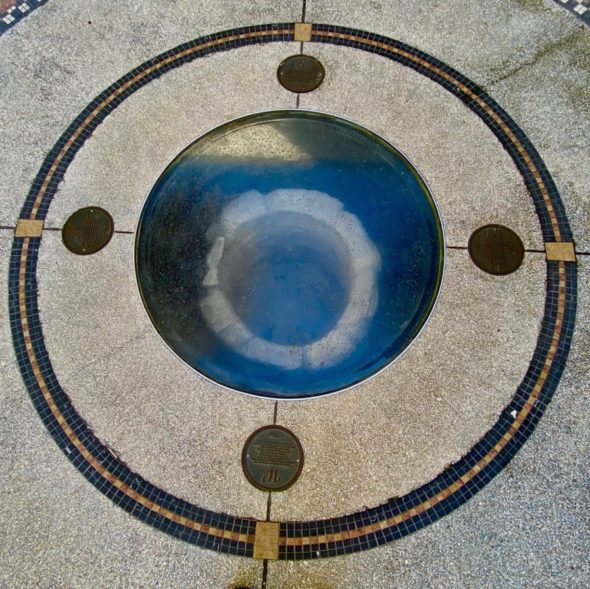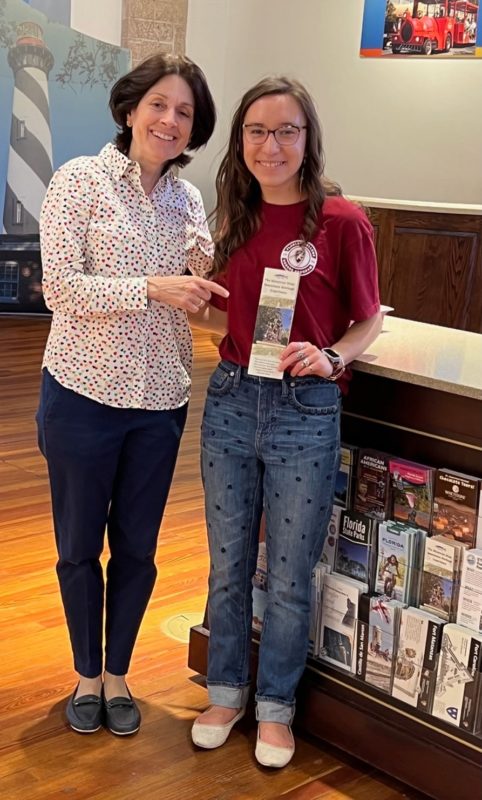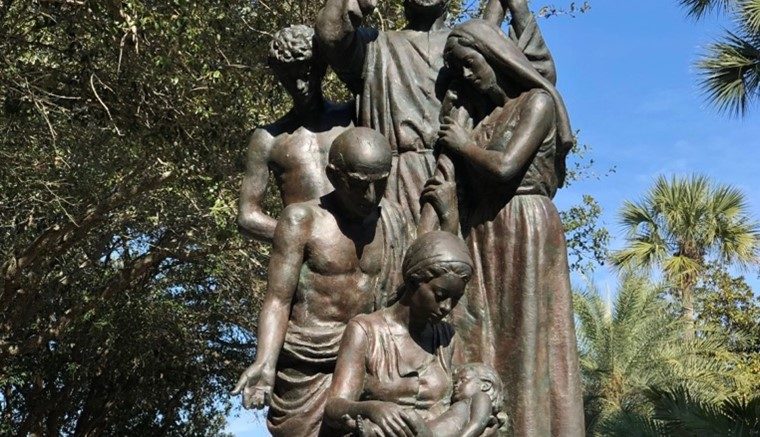By Presleigh Johnson
Public History is everywhere. Whether it’s signs all over St. Augustine, reenactments, or surf culture exhibits, the Oldest City is a treasure trove of history. Being a Flagler College student is one of the best ways to learn about the St. Augustine community.
The Minorcan presence in St. Augustine remains strong all over the city. The bridge connecting Vilano Beach and St. Augustine is named after Francis and Mary Usina who operated a tour boat. The statue next to the Cathedral Basilica is of Father Camps, the Minorcans’ spiritual leader who also preserved their eighteenth-century history. A section of downtown has been coined the “Minorcan Quarter” because of how many Minorcans lived on those streets. Datil pepper dishes served at local restaurants like The Floridian are a unique way to savor the enduring legacy of Minorcan cuisine.

On a city tour several years ago, I heard that many St. Augustine residents today descended from the Minorcan community. It wasn’t until last year that I heard the Minorcan story, a chapter of local history central to St. Augustine culture, but remains under-appreciated.
My Flagler College experience has opened up opportunities to learn history, especially from St. Augustine, I never knew existed. Last fall, I read a Gargoyle article about Dr. Darien Andreu, a Professor of English at Flagler College, who, as a Minorcan herself, wanted to share their rich cultural history. My curiosity piqued, I told Dr. Andreu I was interested in the Minorcan Studies Project.
Through Dr. Andreu, I was exposed to the history of the Minorcan people, a part of St. Augustine’s storied past. In 1768, 1,403 colonists set sail in search of opportunity from Minorca in the Mediterranean Islands. They settled in the New Smyrna area to work on English indigo plantations. Experiencing the cruelties of indentured servitude, they looked for an escape. In 1777, Governor Patrick Tonyn granted them refuge in St. Augustine, so the approximately 500 survivors walked from New Smyrna to St. Augustine, where they would live and work.
Flagler College’s campus has its own share of Minorcan history, too. The well preserved outside Pollard Hall is a Minorcan one. Markland House belonged to Dr. Andrew Anderson who sought to preserve the Minorcan “Fromajadas” song important to the city’s heritage.

Currently, there are 26,000 Minorcan residents in St. John’s County whose family history goes back 245 years. The Minorcans of St. Augustine, as Dr. Andreu often says, “are like the Cajuns of Louisiana.”
Dr. Andreu and I have been working on outreach projects to share the Minorcan story, ranging from oral histories to the current exhibit in Proctor Library. Last spring, we created a walking tour brochure that features 15 different Minorcan sites. We were excited when the Visitor Information Center asked for more copies this summer because so many visitors picked one up for themselves.

The Minorcan Studies Project is a perfect example of St. Augustine’s unique local history waiting to be told. As Dr. Andreu’s research assistant and a St. Augustine Historical Society intern, I’ve learned that there’s so much more local history to share with the public and that students can be a part of that experience.
And all of this discovery started with an article from the Gargoyle.




Be the first to comment on "Exploring St. Augustine’s rich Minorcan heritage"